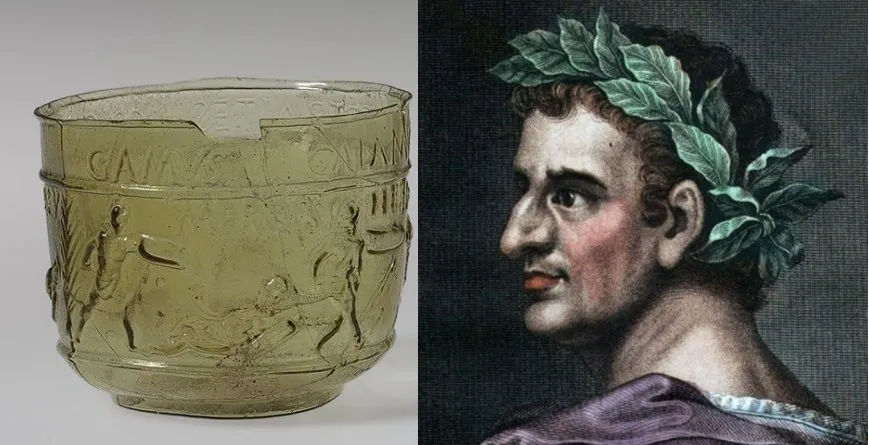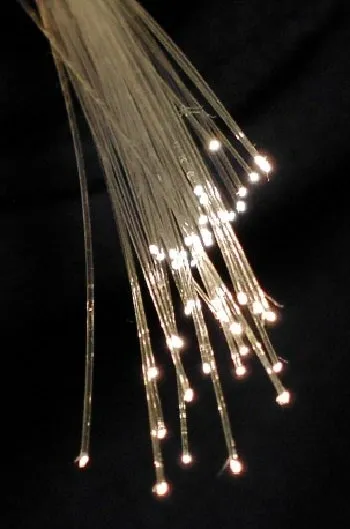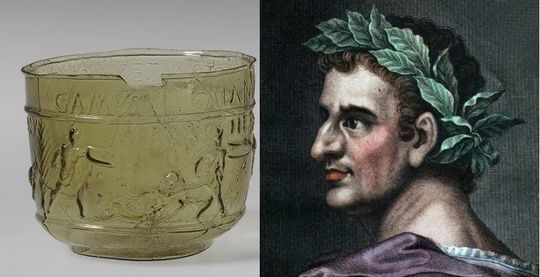
Ancient Roman Glass Bowl and Second Roman Emperor Tiberius Augustus Caesar
Supposedly, during the time of Tiberius Caesar, whoever invented this flexible glass, brought it before him. The volatile emperor that spent his off days grooming Caligula took one look and decided to test it. We have no idea what this test was, but I like to imagine the oaf lifting it above his head and slamming it onto the marble floor only to find that it dented instead of shattering.
Perhaps with a poorly hidden smug grin, the inventor quickly scooped it up, pulled out a small hammer from the folds of his toga, and lightly tapped the dented part until it was as if the emperor had never handled it. Good as new.
Presumably glowering, Tiberius made this nameless inventor swear up and down that he was truly the only man alive who knew the manufacturing techniques, whereupon Tiberius summarily had the man beheaded without a second thought, mind already having shifted to what the menu of his lunch banquet would be.
Why?
Because this new flexible glass could’ve devalued both gold and silver, collapsing his always teetering economy. Not like emperors had a nasty habit of debasing the currency or anything.
Of course, this account is largely a fantasy if not entertaining. The two main sources for this myth are Petronius and Pliny the Elder, both of whom are open about its satirical and dubious nature. That didn’t stop later historians from taking it as fact, however, as Isidore of Seville would pick it up in later centuries only for it to work its way into articles on websites that hang by the fringes of the internet. A whimsical article with an ad for crystals in the corner talking about healing powers and vortexes.
I don’t want to fall into the same trap, so let’s get to the bottom of things if possible. As far as we know, that parable is entirely fabrication, and its inventor never existed. Flexible glass in the period of the Roman Empire probably was never a reality, though it would have been cool to see that come up during an archaeological dig. We do, however have flexible glass in the modern day in the form of fiber optics.
Note: Thank you for reading this fifth edition of Technology Lost to Time. Excusing the pun, I was a bit pressed for time, and this seemed like a fun subject to discuss. Thank you, and see you all in the next one!


